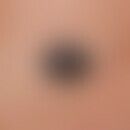Synonym(s)
DefinitionThis section has been translated automatically.
The T-lymphocyte (T-cell for short) is a representative of a cell group of white blood cells. T-lymphocytes have a spherical shape and are approximately the same size as the red blood cells. On average, a human T-cell reaches a diameter of about 7.5 µm.
T-lymphocytes are functionally divided into 2 families due to the accessory surface antigens CD4 and CD8:
- CD4+ T lymphocytes, which are only associated with MHC class II molecules (HLA.DQ, HLA.DP, HLA.DR)
- CD8+-T lymphocytes that only interact with MHC class I molecules (HLA.A, HLA.B, HLA.C).
General informationThis section has been translated automatically.
Standard values: 900-2.300 cells/µl
Note(s)This section has been translated automatically.
T-lymphocytes carry the T-cell receptor (TCR) on their surface as a common immunological feature. The TCR has a structure similar to that of immunoglobulins, which allows this receptor to recognise the antigen structure specific to it, a peptide. In contrast to immunoglobulins, however, TCR only recognises the internalised antigen (peptide) when it is presented to it by the major histocompatibility complex(MHC).
Tc cells/Th cells:
Cytotoxic T lymphocytes: MHC class I (HLA-A, HLA-B, HLA-C) present peptides on T lymphocytes that express the CD8 molecule and act primarily as cytotoxic T lymphocytes (Tc).
T-helper T-lymphocytes: MHC class II (HLA-DR, HLA-DQ, HLA-DP) present peptides on T-lymphocytes expressing the CD4 molecule and acting primarily as T-helper T-lymphocytes (T-helper cells,Th). During the immune response, the CD4+ helper cells develop into effector cells defined by a specific cytokine pattern:
- Th1 cell: produce IL-2 and interferon gamma
- Th2 cell: produce IL-4,Il-5, Il-9,Il-10, Il-13
Other subtypes are:
- Th17 lymphocyte
- Regulatory T-cell (Treg), which in turn can be divided into the CD4+ and CD8+ Tregs They face all other Th cell populations as general suppressors of Th immune responses.
The following applies to both the T suppressor cells and the T helper cells: 3 impulses are essential for antigen recognition and the resulting immune response.
- The complex of MHC-TCR-peptide requires functional stabilisation via the co-receptors CD4/CD8.
- Other costimulatory molecules are necessary (e.g. CD28 with its ligand B7 expressed on the surface of the antigen-presenting cells (APC)). These costimulators lead to either activation or deactivation/paralysis of Th or Tc lymphocytes. They can therefore also act as a brake on the immune response.
- Soluble mediators, cytokines that primarily serve to differentiate lymphocytes. With the expressed cytokines, or through a special cytokine pattern, Th cells determine the immunoglobulin pattern of B lymphocytes. Furthermore, they influence the biological behaviour of antigen-presenting cells (APC), macrophages, eosinophil granulocytes and other cells. The expressed cytokine pattern ultimately defines the differentiation of T cells and thus their functional heterogeneity.
LiteratureThis section has been translated automatically.
- Deng J et al. (2022) Gamma delta (γδ) T cells in cancer immunotherapy; where it comes from, where it will go? Eur J Pharmacol 919:174803.
Fehlner K (2013) The activity regulation of ERM (ezrin/radixin/moesin) proteins and their importance for LFA-1 mediated T cell migration . Inagural dissertation at the Technical University of Munich. Chair of Chemistry of Biopolymers.
Jee MH et al. (2020) γδ T cells and inflammatory skin diseases. Immunol Rev 298:61-73.
Komano H et al.(1995) Homeostatic regulation of intestinal epithelia by intraepithelial gamma delta T cells. Proc Natl Acad Sci USA 92: 6147-51.




